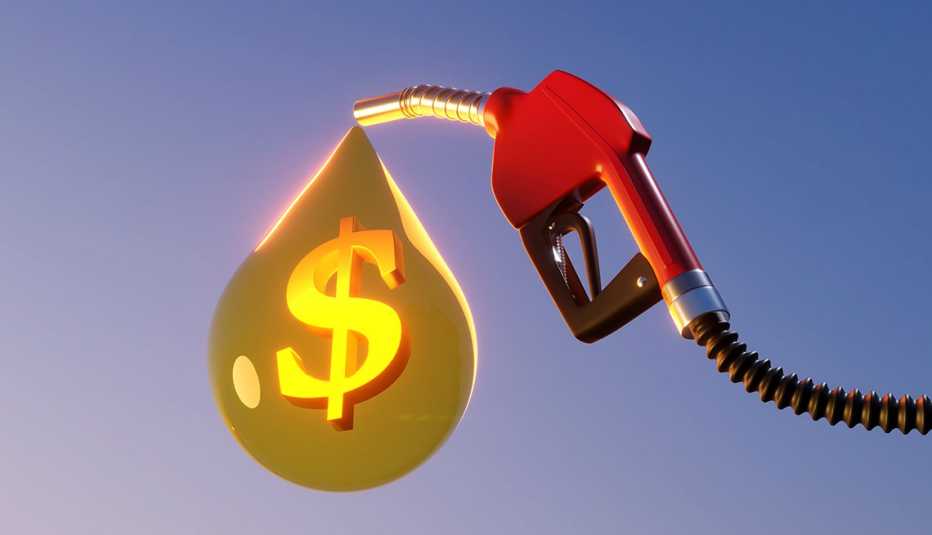AARP Hearing Center


Travelers going over the river and through the woods this Thanksgiving are unlikely to be happy about gasoline prices. Gas may become a bit cheaper in the winter, however, as fewer drivers hit the road — and perhaps because the U.S. and other countries will tap their strategic petroleum reserves.
A gallon of unleaded gas costs an average of $3.832 — up 11 cents, or 3 percent, from a year ago, according to the American Automobile Association (AAA). Although prices are still well below their record high of $5.016 per gallon, set in June 2022, the sharp spike in the cost of gasoline has put a dent in consumers’ budgets.
The United States is the world’s largest producer of oil, according to the U.S. Energy Information Administration (EIA), pumping 14.7 percent of the world’s oil. Saudi Arabia (13.2 percent) and Russia (12.7 percent) are in second and third place.
The Saudis have cut production by 1 million barrels a day since July, and have extended that cut through the end of the year. Russia has cut production by 300,000 barrels and plans to keep those levels through 2023. Those cuts are enough to explain the rise in oil to about $90 a barrel today, from about $67 a barrel in March.
"The recent drop in the national average, while small, is fairly typical this time of year as much of the country makes the switch to less expensive winter blend gasoline,” said Andrew Gross, AAA spokesperson. “But the gradual seasonal decline in pump prices is being slowed by higher oil costs, hovering around $90 a barrel.”
Then there’s the emergence of OPEC Plus — OPEC stands for the Organization of Petroleum Exporting Countries, founded in 1960 by Iran, Iraq, Kuwait, Saudi Arabia and Venezuela. There are now 13 member countries. The “Plus” part includes Russia and other large oil producers that, while not OPEC members, have been coordinating with OPEC to boost oil prices. “The thing that’s amazing is that it’s an incredibly disciplined cartel at the moment,” says Tom Kloza, head of energy analysis for the Oil Price Information Service. “It’s a real tight ship. And that has pushed up the price of crude.”
10 ways to save money on gas
No one likes to pay more than they have to, so shop around for the cheapest gas. You can use an app — such as the AAA Mobile app — to find the cheapest gas near you. But you can also reduce your fuel bill substantially by following these tips from AAA.
1. Slow down. Fuel economy drops significantly once you go faster than 50 miles an hour.
2. Seriously, slow down. Jackrabbit starts may make you beat out the 1981 Dodge Omni off the line when the light changes, but mashing the accelerator drives up your gas consumption, too. “You’re just burning gas and you don’t get anywhere any faster,” Gross says. “And, you know, Safeway is still going to be there.”
3. Take care of your car. When the “Check engine” light comes on, it usually means that there’s a problem causing excessive emissions and, possibly, reducing fuel economy.
4. Take care of your tires. If the tires are underinflated, “You’re just chewing up your fuel efficiency,” Gross says. You can find your proper tire pressure on a sticker inside your driver’s side door.
5. If you see a red light ahead, take your foot off the gas and coast to a stop.
6. Consolidate your trips to minimize your driving.
7. Don’t leave the car idling in winter to warm it up. It’s unnecessary, wastes gas and also invites car thieves.
8. Get the junk out of your trunk. The more you haul, the more fuel you use.
9. Use roof racks sparingly. They can greatly decrease your mileage.
10. Don’t use premium fuel unless your owner’s manual says you must. “You don’t need to put in a higher grade of gas because you think it makes your car run better,” Gross says.
Crude prices have risen in recent weeks, from $91.48 a barrel in mid-September to $93.79 a barrel on September 27. Gasoline prices should follow — eventually. “I’ve noticed that when the price of a barrel of oil goes up, it seems like the price at the pump goes up immediately,” says Gross. “However, when the price of a barrel of oil drops, the price at the pump doesn’t drop immediately.”
Despite its prodigious oil output, however, the U.S. is also the largest oil consumer, and oil prices are set globally, not locally. “We also export a lot of gasoline,” Gross says. “It doesn’t all just stay here.”
Beyond the price of crude, there are other significant factors in the price of gasoline. Distribution accounts for about 12 percent of the cost of a gallon of gas. The farther you are from where the oil is produced, the higher the distribution costs. Federal and state taxes account for 13 percent of the cost of gasoline, and refining costs and profits are responsible for 18 percent of the price of a gallon of gas.



































































More From AARP
Student Loan Payments Restart Oct. 1
Check out your repayment options nowWhy Is Your Water Bill Soaring?
Aging infrastructure is one factor10 Ways To Stick To Your Holiday Budget
Pay cash and shop hard